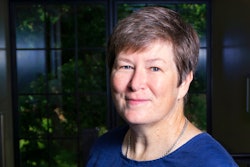When faculty are empowered with equity-based resources and when student voices and experiences are centered, students and faculty experience a greater sense of belonging at their institution and academic outcomes are improved.

Over the 2020-21 academic year, SEP engaged with six partner universities, nine peer-learning network universities, 295 faculty, and roughly 10,000 students to develop and share practical, equitable approaches to classroom instruction and broader institutional practices to build a student-centered learning environment. The initial focus of this study was science, technology, engineering, and math (STEM) courses, and fields underrepresented by minoritized students.
“Partnering with faculty within institutions of higher education is a powerful tool for creating equitable and inclusive learning environments,” said Dr. Mary C. Murphy, a Herman B. Wells endowed professor at Indiana University, Bloomington and a principal SEP investigator. “[The faculty] are the culture creators of their classroom. Treat them as such and give them tools.”
Faculty and administration in the study were given access to SEP resources like The First Day Toolkit, which helps in the revising of course syllabi and content to diversify sources and to convey belief in students’ abilities to grow and learn. Faculty came together in professional development groups, building communities of practice to share their progress. They were able to access handbooks, libraries with field-tested guides, and a data-driven learning program called Ascend that helps users understand a student’s learning environment and what changes can make the environment more equitable, engaging, and supportive.
“One of the most powerful things the SEP gave us was a way to measure student experience in real time. I can tell you how informative, humbling and important this tool was, to see equity gaps in your own classroom despite your own best efforts,” said Dr. Sushilla Knottenbelt, senior lecturer in the department of chemistry and chemical biology and facilitator of the community of practice at the University of New Mexico, one of the six participating schools. Dr. Sushilla Knottenbelt, senior lecturer in the department of chemistry and chemical biology and facilitator of the community of practice at the University of New Mexico
Dr. Sushilla Knottenbelt, senior lecturer in the department of chemistry and chemical biology and facilitator of the community of practice at the University of New Mexico
Students were surveyed intermittently throughout the semester to ascertain a sense of belonging, identity safety, and whether they felt their classroom environment was treating them fairly. The data was disaggregated so faculty could assess where the gaps were in their instruction and who was most likely to fall behind.














